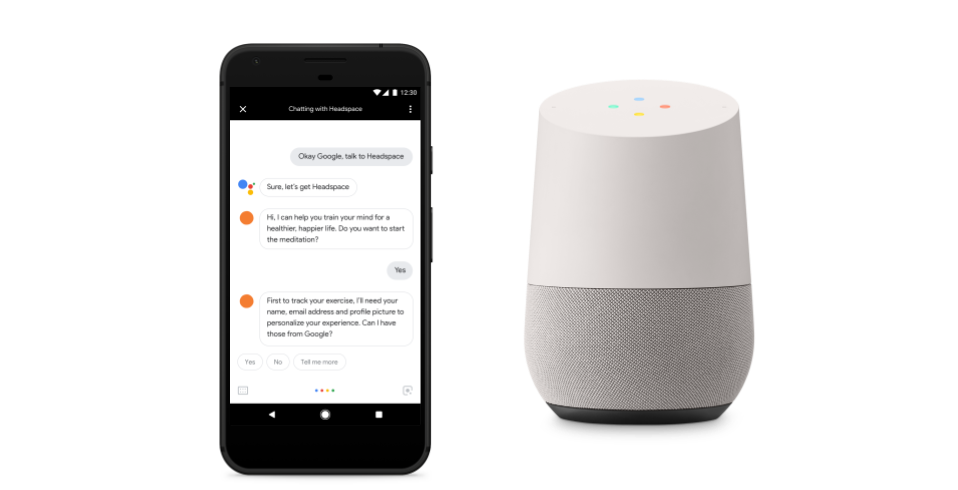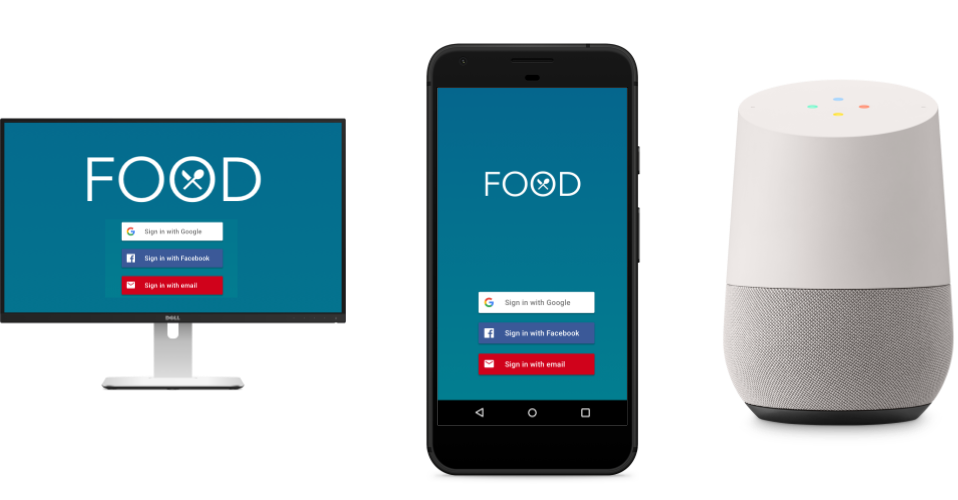您可以使用帐号关联,将用户的 Google 帐号与用户在您的身份验证系统中的帐号关联起来。这样,您就可以为用户打造更丰富的体验;例如,您可以保存用户的美食或音乐偏好设置、交易记录以及其他信息,以便用于提供更加个性化的体验。
如果您的 Action 是不同平台(例如 Web 或 Android)上的现有应用的配套应用,您可以使用帐号关联安全地面向所有平台提供用户的偏好设置,从而确保一致的跨平台体验。
Actions on Google 的帐号关联使用 Google 的登录机制 Google 登录,您还可以选择使用 OAuth 2.0 这一业界标准的授权协议。
了解帐号关联流程
当 Google 助理为用户匹配 Google 帐号时,您可以使用帐号关联请求用户授予相应 Google 帐号的访问权限。您可以使用帐号数据执行以下操作:
- 如果用户已在其他平台上使用您的 Action 或您的某个应用,则在身份验证系统中查找该帐号的匹配项。
- 在您的身份验证系统中为新用户创建新帐号。
Actions on Google 提供三种不同的帐号关联类型。
Google 登录功能

借助适用于 Google 助理的 Google 登录功能,你的 Action 可以在对话期间请求访问用户的 Google 个人资料,包括用户的名称、电子邮件地址和个人资料照片。用户可以通过语音完成整个流程,从而提供顺畅的登录体验。
如果满足以下任一条件,建议使用此类帐号关联:
- 您没有现有的身份验证系统。
- 您已有一个身份验证系统,并且只想关联到使用其 @gmail.com 地址注册现有应用的用户。
如需了解详情,请参阅 Google 登录概念指南和实现指南。
基于 OAuth 的 Google 登录“简化”关联

基于 OAuth 的 Google 登录“简化”关联类型在基于 OAuth 的帐号关联的基础上添加了 Google 登录。这样可为 Google 用户提供无缝的基于语音的关联,同时可为使用非 Google 身份注册服务的用户启用帐号关联。
要使用此流程,您需要扩展一种支持的 OAuth 2.0 标准流程,以添加对该协议的 Google 专有扩展的支持,从而允许您执行以下操作:
- 使用 Google 个人资料信息无缝关联帐号。
- 使用 Google 个人资料信息无缝创建新帐号(可选)。
如果您已有身份验证系统,并且希望允许用户连接到非 @gmail.com 地址,则建议使用此类帐号关联。
如需了解详情,请参阅基于 OAuth 的 Google 登录“简化”链接概念指南和实现指南。
OAuth 关联
OAuth 关联类型支持两种业界标准 OAuth 2.0 流程,即隐式和授权代码流程。
不建议使用此流程,因为它需要将用户互动从语音传输到屏幕。如果您已有 OAuth 2.0 服务器的现有实现,则可以考虑使用此流程,并且您无法通过扩展令牌交换端点来添加对 Google 协议的支持,以便使用 ID 令牌自动关联和创建帐号。
如需了解详情,请参阅 OAuth 关联概念指南和实现指南。
相关资源
如需详细了解如何在 Action 中实现帐号关联,请参阅以下资源:
- 帐号关联:Dialogflow:你可以在 Action 中实现的关联类型简介。

